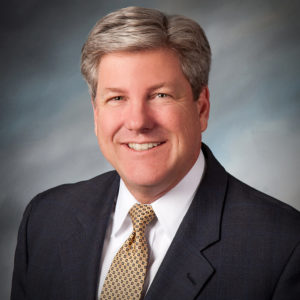Originally published on Financial Planning
By Ann Marsh, 19 September 2016
Hey, RIAs, is your Form ADV conflict-free? Probably not.
Only 18% of RIAs refrain from five crucial conflicts of interest, the Institute for the Fiduciary Standard found in its recent study of these complex, two-part public filings.
While most investment advice contains inherent conflicts — even fee-only advice — certain practices, such as commission-driven sales of investment products, pose particularly clear-cut ones.
Conflicts of interest constitute a “moral problem” for RIAs, Brian Hamburger, general counsel of the institute’s Best Practices Board, told reporters. And it behooves the industry to be more transparent, he said.
“Until clients are asking the difficult questions, [advisers’] behavior is simply not going to change,” he said. “I think the best thing we can hope to gain from [the study] is client engagement.”
The institute scrutinized data from SEC Form ADVs for 135 RIAs, all of which had at least $250 million assets under management and collectively managed $465 billion. The survey sample represents a small portion of all the nearly 12,000 RIAs in the country that collectively serve more than 36 million clients, the study says.
It also looked at nine large, brand-name financial institutions that together manage $2.54 trillion, for purposes of comparison. They were Ameriprise, Edward Jones, J.P. Morgan Securities, LPL Financial, Merrill Lynch, Morgan Stanley, PNC Investments, UBS Financial Services and Wells Fargo.
The study examined issues captured in the following five sections of the ADV:
1. Firms with registered representatives of broker-dealers who, by definition, are compensated by commission. The lure of commission sales present a core conflict of interest for advisers. In all, 35% of the RIAs in the study disclosed they have registered reps. (Part 1A, item 5B – 2).
2. Firms that have employees who are licensed agents of an insurance company or agency that are also paid by commission. Some 39% of RIAs, reported having such workers. (Part 1A, Item 5B – 5).
These two disclosures raise “the question of what impact their sales efforts may have on objective advice,” the authors write. “What we do not know from the data is how prevalent in any particular firm is commission compensation, and how well the firm manages these conflicts of interest, or whether the commission compensation earned is credited back to the client.”
3. Firms that recommend securities to advisory clients in which the adviser or a related person has some proprietary interest. In all, 17% of RIAs and 78% of large financial services firms say they do. (Part 1A, Item 8A – 3).
4. Firms that receive compensation other than fees from clients. Of RIAs surveyed, 34% exclusively receive fees while none of the large financial services firms do. Of the 66% of RIAs that receive other forms of compensation, 52% receive brokerage compensation and 34% receive insurance compensation. (Part 2, Item 5, C and E).
5. Firms that have “a relationship material to their business that creates a material conflict of interest” with clients. More than three quarters, or 76%, of RIAs and 100% of large firms report having this conflict. (Part 2A, Item C and D)
Financial Planning takes into account most of these conflicts, including others reported elsewhere on ADVs, in constructing its annual Top RIAs list, which is published annually in January. The list is the only one in the industry that seeks to capture firms with the fewest possible conflicts of interest. For example, FP examines conflicts that can arise when firms report substantial outside ownership, often in the form of private equity firms or parent companies (Part 1A, Schedule A and B).
‘OPAQUE PRACTICES’
The institute said it hopes the study will illustrate the wide disparity among RIAs when it comes to managing — or failing to manage — conflicts of interest.
“Some firms appear to deem certain conflicts acceptable, while other firms, just 18% in this survey, appear to deem the same conflicts as unacceptable and avoid them entirely,” the study says.
INVESTOR ADVOCACY
Hamburger says he has seen an increased number of advisers willing to engage in such conflicts over the past decade — possibly suspecting that clients may not understand the complex disclosure forms.
By showing investors where to look in Form ADVs, clients can find out if their RIA, or prospective RIA, has conflicts of interest and, if so, how many, Knut Rostad, president of the institute, said. Rostad co-authored the study with Darren Fogarty.
“Investors in search of an advisory firm should take the time to look at their ADVs and focus on these sections because we think they can be revealing about the differences between the firms that are not always visible by looking at the firms’ websites,” Rostad said during a press conference.

